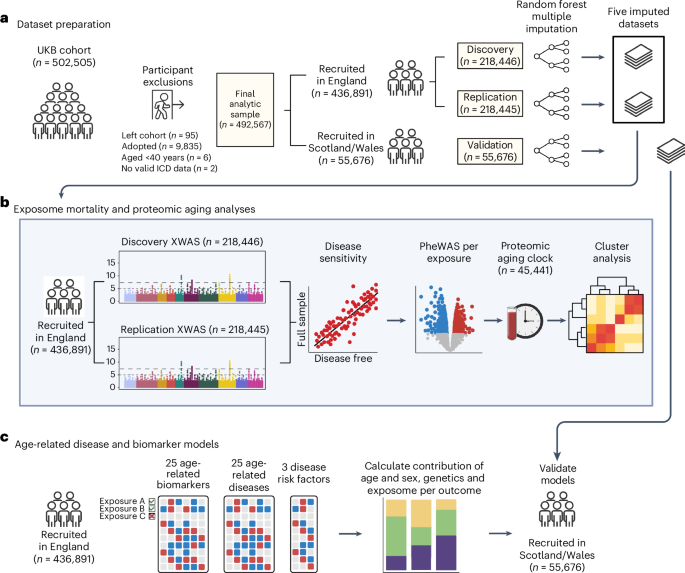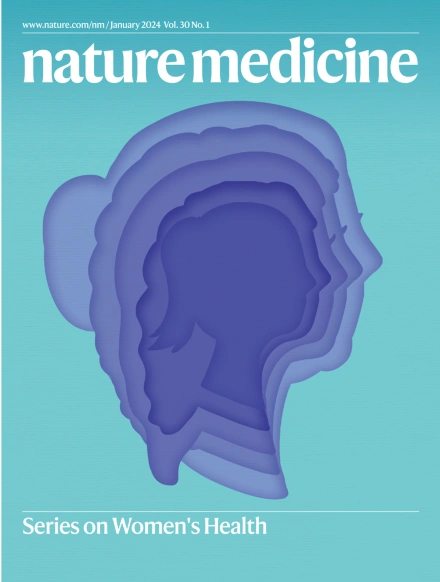Integrating the environmental and genetic architectures of aging and mortality
IF 58.7
1区 医学
Q1 BIOCHEMISTRY & MOLECULAR BIOLOGY
引用次数: 0
Abstract
Both environmental exposures and genetics are known to play important roles in shaping human aging. Here we aimed to quantify the relative contributions of environment (referred to as the exposome) and genetics to aging and premature mortality. To systematically identify environmental exposures associated with aging in the UK Biobank, we first conducted an exposome-wide analysis of all-cause mortality (n = 492,567) and then assessed the associations of these exposures with a proteomic age clock (n = 45,441), identifying 25 independent exposures associated with mortality and proteomic aging. These exposures were also associated with incident age-related multimorbidity, aging biomarkers and major disease risk factors. Compared with information on age and sex, polygenic risk scores for 22 major diseases explained less than 2 percentage points of additional mortality variation, whereas the exposome explained an additional 17 percentage points. Polygenic risk explained a greater proportion of variation (10.3–26.2%) compared with the exposome for incidence of dementias and breast, prostate and colorectal cancers, whereas the exposome explained a greater proportion of variation (5.5–49.4%) compared with polygenic risk for incidence of diseases of the lung, heart and liver. Our findings provide a comprehensive map of the contributions of environment and genetics to mortality and incidence of common age-related diseases, suggesting that the exposome shapes distinct patterns of disease and mortality risk, irrespective of polygenic disease risk. Based on a systematic analysis of environmental exposures associated with aging and mortality in the UK Biobank, the relative contributions of such exposures and genetic risk for mortality and a range of age-related diseases were compared, highlighting the potential beneficial effects of environment-focused interventions.


求助全文
约1分钟内获得全文
求助全文
来源期刊

Nature Medicine
医学-生化与分子生物学
CiteScore
100.90
自引率
0.70%
发文量
525
审稿时长
1 months
期刊介绍:
Nature Medicine is a monthly journal publishing original peer-reviewed research in all areas of medicine. The publication focuses on originality, timeliness, interdisciplinary interest, and the impact on improving human health. In addition to research articles, Nature Medicine also publishes commissioned content such as News, Reviews, and Perspectives. This content aims to provide context for the latest advances in translational and clinical research, reaching a wide audience of M.D. and Ph.D. readers. All editorial decisions for the journal are made by a team of full-time professional editors.
Nature Medicine consider all types of clinical research, including:
-Case-reports and small case series
-Clinical trials, whether phase 1, 2, 3 or 4
-Observational studies
-Meta-analyses
-Biomarker studies
-Public and global health studies
Nature Medicine is also committed to facilitating communication between translational and clinical researchers. As such, we consider “hybrid” studies with preclinical and translational findings reported alongside data from clinical studies.
 求助内容:
求助内容: 应助结果提醒方式:
应助结果提醒方式:


